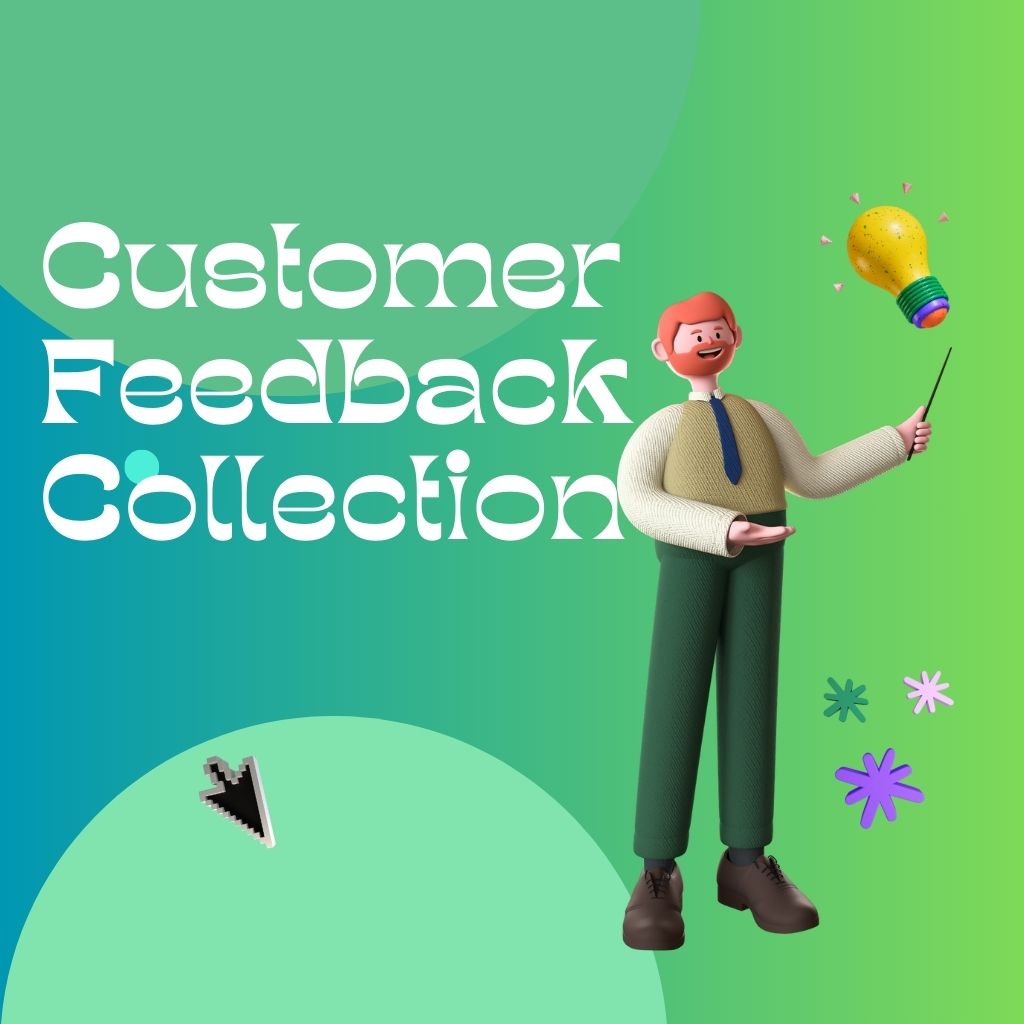
Introduction: The Value of Listening to Your Customers
In today’s competitive business environment, understanding your customers is no longer optional—it’s essential. Businesses thrive when they listen, adapt, and respond to the needs and expectations of their audience.
Customer Feedback Collection is a strategic process that empowers organizations to gather insights, improve services, and make data-driven decisions. By effectively capturing customer opinions, preferences, and experiences, businesses can enhance satisfaction, drive innovation, and build loyalty.
This article explores the importance, methods, benefits, and best practices for collecting customer feedback, demonstrating how it transforms information into actionable intelligence.
1. What is Customer Feedback Collection?
Customer Feedback Collection is the process of systematically gathering opinions, experiences, and suggestions from customers regarding a product, service, or overall brand experience. This feedback can be qualitative (opinions, comments, suggestions) or quantitative (ratings, scores, survey responses).
Typical feedback sources include:
-
Online surveys and questionnaires
-
Customer interviews and focus groups
-
Social media comments and reviews
-
Email feedback forms
-
Post-purchase or post-service follow-ups
-
In-app or website feedback tools
The goal is to gain insights that inform business improvements, innovation, and customer satisfaction strategies.
2. Why Customer Feedback Collection is Critical
Customer feedback is a goldmine of information that can guide strategic decision-making. Key reasons why it is critical include:
-
Improves Products and Services: Identify pain points and areas for enhancement.
-
Boosts Customer Satisfaction: Demonstrates that the business values their opinions.
-
Drives Innovation: Feedback inspires new ideas and improvements.
-
Enhances Customer Retention: Responsive businesses create loyal customers.
-
Supports Data-Driven Decisions: Makes strategies evidence-based rather than assumption-based.
3. Methods of Collecting Customer Feedback
To maximize insights, businesses should employ multiple methods:
a) SuCustomer Feedback Collection | Unlock Insights & Drive Business Growthrveys and Questionnaires
Structured surveys provide measurable feedback. Tools like Google Forms, SurveyMonkey, and Typeform are widely used.
b) Customer Interviews
Direct conversations help uncover deep insights, motivations, and expectations.
c) Social Media Listening
Monitoring mentions, comments, and messages helps understand public perception.
d) Review Platforms
Feedback on platforms like Yelp, Google Reviews, and Trustpilot reveals product and service strengths and weaknesses.
e) Email and Post-Purchase Feedback
Follow-up emails or SMS surveys encourage customers to share their experience after interactions.
f) In-App or Website Feedback Tools
Embedded feedback forms, chatbots, or rating prompts collect immediate user insights.
4. Best Practices for Customer Feedback Collection
To ensure effectiveness, businesses should follow these best practices:
a) Make Feedback Simple
Design concise, easy-to-answer surveys to encourage participation.
b) Use Multiple Channels
Provide options for feedback via email, social media, apps, and in-person interactions.
c) Be Transparent
Communicate why feedback is collected and how it will be used.
d) Actively Listen
Pay attention to all feedback, positive and negative, without bias.
e) Follow-Up with Customers
Acknowledge feedback and communicate actions taken to show appreciation.
f) Analyze and Segment
Segment feedback by demographics, purchase history, or other factors for actionable insights.
g) Leverage Technology
Use analytics and CRM tools to collect, store, and analyze feedback efficiently.
5. Benefits of Effective Customer Feedback Collection
Properly collected and utilized feedback provides numerous benefits:
-
Enhanced Customer Experience: Tailored improvements lead to happier customers.
-
Higher Retention and Loyalty: Customers feel valued when their voices are heard.
-
Improved Product and Service Quality: Identify and address gaps proactively.
-
Competitive Advantage: Businesses adapt faster and outperform competitors.
-
Strategic Decision-Making: Data-driven insights reduce risks and improve outcomes.
6. Tools and Technologies for Feedback Collection
Modern businesses use technology to streamline and improve feedback collection:
-
Survey Tools: SurveyMonkey, Google Forms, Typeform
-
CRM Integration: Salesforce, HubSpot, Zoho CRM for centralized feedback tracking
-
Social Media Monitoring Tools: Hootsuite, Sprout Social for real-time insights
-
Review Platforms: Trustpilot, Yelp, Google Reviews
-
Feedback Analytics Tools: Qualtrics, Medallia, Feedier for trend analysis
-
Automated Email Feedback Systems: Post-purchase follow-ups and NPS surveys
7. Challenges in Customer Feedback Collection
Collecting feedback is not without challenges:
-
Low Response Rates: Overcome by making surveys simple and incentivizing participation.
-
Biased Responses: Ensure anonymity and neutrality in questions.
-
Data Overload: Use analytics tools to process and interpret large volumes of feedback.
-
Negative Feedback Handling: Train teams to respond constructively and proactively.
-
Integrating Feedback with Operations: Ensure insights translate into actionable changes.
Addressing these challenges ensures that feedback is meaningful, actionable, and strategically valuable.
8. Using Customer Feedback for Growth
Feedback is not just data—it’s a strategic asset. Businesses can leverage feedback to:
-
Refine Products: Identify features that need enhancement or removal.
-
Optimize Services: Improve delivery, support, and user experience.
-
Enhance Marketing Strategies: Align campaigns with customer preferences.
-
Boost Innovation: Generate ideas for new products, services, or features.
-
Strengthen Customer Relationships: Act on feedback to demonstrate care and responsiveness.
9. Transforming Feedback into a Competitive Advantage
Businesses that actively collect, analyze, and act on feedback enjoy a competitive edge:
-
Customer-Centric Culture: Organizations that prioritize customer voices outperform competitors.
-
Data-Driven Decisions: Strategic changes are backed by real insights, reducing risk.
-
Reputation Management: Positive experiences and responsiveness enhance brand reputation.
-
Customer Loyalty: Feedback-driven improvements foster trust and repeat business.
-
Agility: Rapidly adapt to changing customer expectations and market dynamics.
10. Final Thoughts
Customer Feedback Collection is a cornerstone of modern business success. By systematically capturing insights, analyzing trends, and implementing improvements, businesses can enhance customer experience, build loyalty, and drive sustainable growth.
#CustomerFeedback #FeedbackCollection #CustomerInsights #CustomerExperience #DataDrivenDecisions #CustomerSatisfaction #BusinessGrowth

